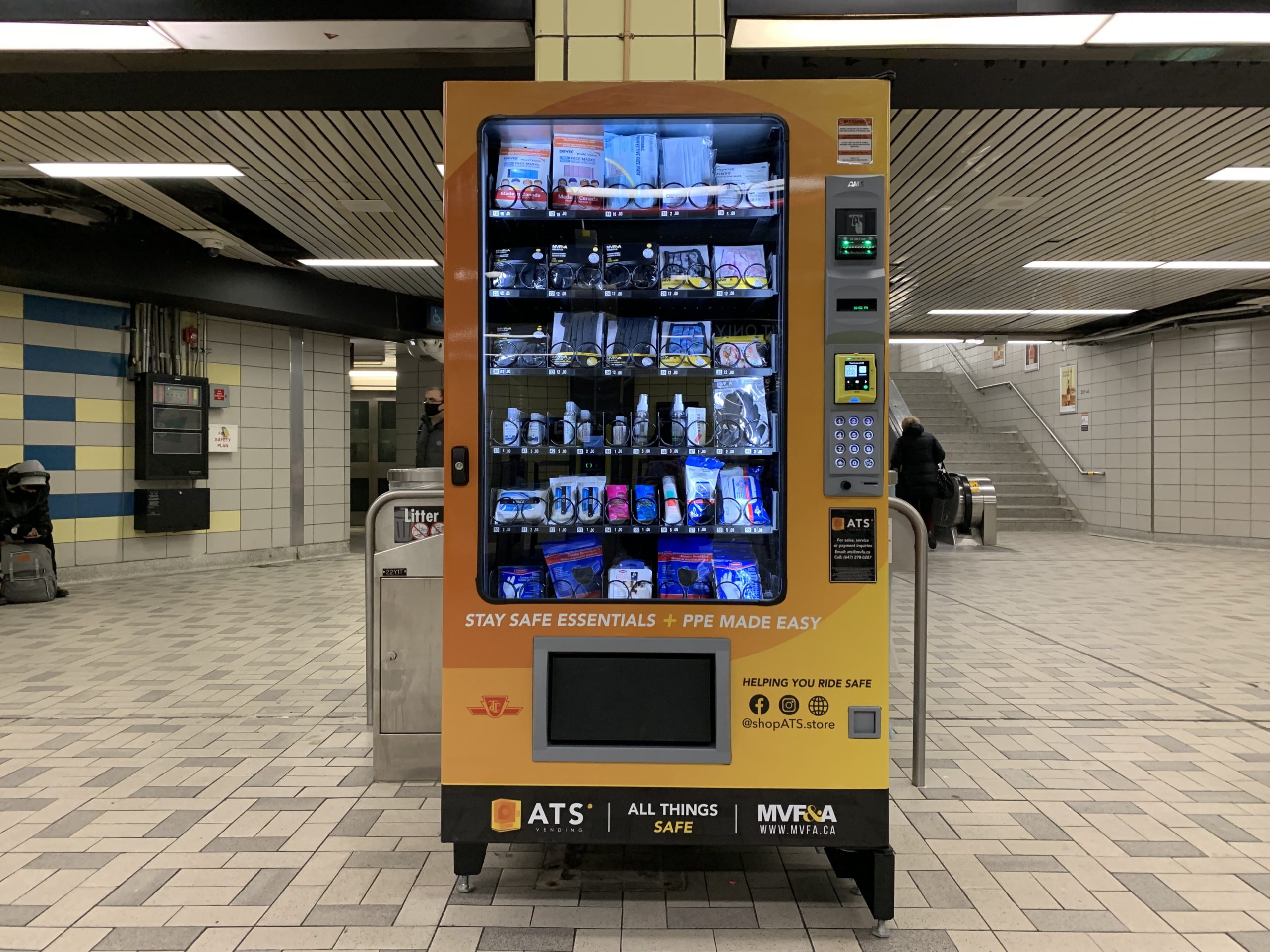New personal protective equipment (PPE) vending machines have been installed at 10 major Toronto Transit Commission (TTC) stations, beginning November 13. The machines are part of a variety of measures implemented to forestall the spread of COVID-19. However, as winter sets in, transit activists have expressed concerns that more needs to be done to protect commuters.
“Throughout the COVID-19 pandemic, it has been encouraging to see Torontonians taking measures to protect each other through the observance of mask-wearing and other mitigation strategies,” said TTC Chair Jaye Robinson in a November 13 statement. “By providing opportunities to purchase inexpensive PPE in stations, we can do our part to encourage this continued effort on the part of our customers.”
Eleven machines have been installed at 10 locations, including Union, Kennedy, Finch, and Vaughan Metropolitan Station. The offerings available for purchase include gloves, sanitizer, wipes, and single- and multi-use face coverings.
While official customer service data is not yet available, TTC officials speak positively about the machines’ impact:
“We are seeing people using them and enjoying them, which is great,” says Hayley Waldman, senior communications advisor for the TTC.
For commuters unable to purchase PPE, or located at stations that don’t have the machines, there are other initiatives available.
The TTC is giving away one million free single-use masks to commuters,
“We continue to hand out masks to our customers at no charge and continue to educate them about the importance of wearing them,” says Waldman. “We also have free hand sanitizer available throughout the system. We encourage customers to follow Toronto Public Health guidelines, stay home when they’re unwell, and be mindful of their fellow customers. We also continue to perform extra thorough and very regular cleaning and fogging of our vehicles and stations.”
“Crowding is an ongoing issue as bus ridership has returned to more than 50 per cent of pre-pandemic levels.”
Waldman also cites “extra thorough and very regular” cleaning of vehicles and stations as another example of TTC’s mitigation of potential winter crowding risks.
“We continue to offer 100 per cent of our usual service despite current ridership levels being below 35 per cent. We also monitor bus service in real time and redeploy service to busy routes when possible,” she adds.
However, over a dozen transit and community activist groups are calling for more to be done on this front. They are urging Mayor John Tory to “speed up a more equitable and safe public transit system.” The groups calling for change include TTCRiders, Toronto & York Region Labour Council, Transport Action Ontario, and Scarborough Transit Action.
One of the changes activists are pushing is for Tory to increase bus service in areas with high COVID-19 rates.
“Crowding is an ongoing issue as bus ridership has returned to more than 50 per cent of pre-pandemic levels,” they stated in a November 17 open letter. “Bus-only lanes are an opportunity to dramatically increase service frequency, but the TTC has reduced the number of buses running on the RapidTO corridor Eglinton East. The TTC should release real-time crowding data and show where Run-As-Directed buses are deployed.”
According to these activists, the TTC’s mask distribution efforts are a good start, but are just that: a start.
“The TTC has taken the positive step of deploying teams to distribute masks on the bus network, but more is needed,” they say.
The groups suggest the introduction of mask dispensers on buses, not just in stations. They also propose shifting the fare inspector role to one that encourages mask use. Finally, they emphasize the need for “effective, multilingual communication” in order to address this increasing issue.
“Riders are reporting a lack of compliance and improper use of masks,” they said. “The TTC’s latest statistics show that only 86 per cent of riders wear their masks properly.”


